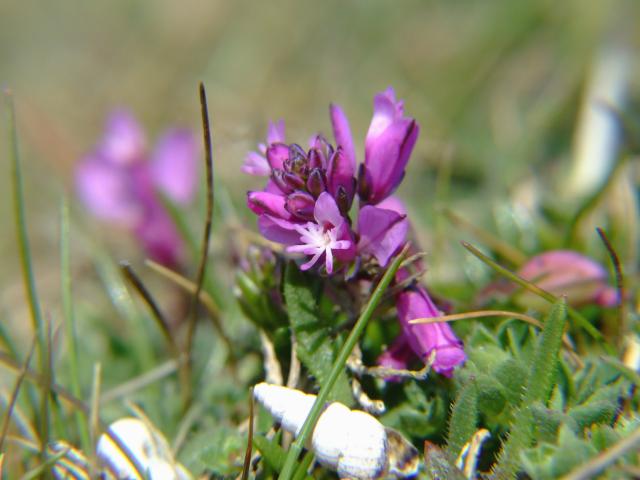
The biological form of Polygala vulgaris is hemicryptophyte scapose, as its overwintering buds are situated just below the soil surface and the floral axis is more or less erect with a few leaves.
Polygala vulgaris reaches on average 7–35 centimetres (2.8–13.8 in) in height. The stems have many branches and are woody at the base. It has alternating pointed leaves, almost glabrous, 2 to 4 mm wide and 10 to 20 mm long. Basal leaves are spatulate, with rounded apex, while the upper leaves are lanceolate.
The flowers are gathered in long terminal inflorescences. The color of the corolla varies between blue and violet, it can rarely occurs purple forms. The flower's outer three sepals are normally small, green and insignificant, while the inner two sepals are bigger. The inner sepals are usually shorter than the petals. The stalks of the eight stamens are joined together to form a tube, and united with this tube, one on either side, are two tiny petals. On the lower side of the flower lies the third petal; it too, is joined to the stamen tube, but it is larger, and fringed. The flowering period extends from May through July.
Common Milkwort is quite similar to the Heath Milkwort (Polygala serpyllifolia), but in this species the inner sepals are usually longer than the petals. The Heath Milkwort Polygala serpyllifolia can be all the same colours except for white. These four possible colours account for the milkworts' Irish folk-name of 'four sisters'.
No comments:
Post a Comment